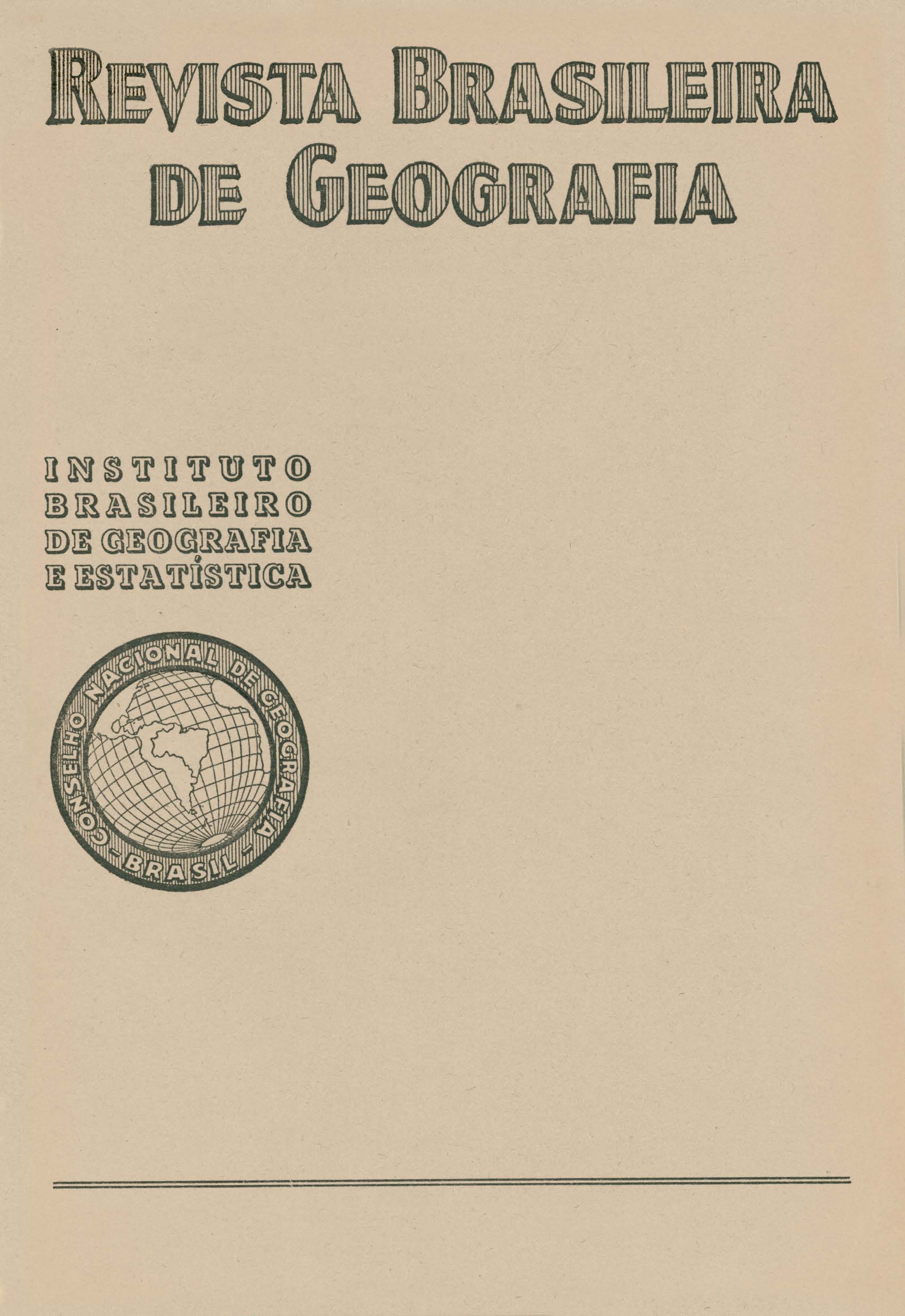Geografia dos transportes no Brasil : circulação interna anual : rodovias modernas
Resumo
In this article Engineer Moacir F. Silva, technica1 advisor to the National Council of Geography, submits the seventh chapter of his work "Geography of Transportation in Brazil", entitled Present Internal Circulation.
He states at the outset that owing to the lack of competent legislation we consider the highways as being federal, state and municipal, according to whether they were constructed by the respective governments of the union, the states or the municipalities. Thus, for the purpose of this study, he classifies as national highways: - a) those which pass through two or more states; b) those in the direction of, or alongside of the boundaries of the country; and c) those of general interest (military, administrative, tourist etc.).
He refers in detail to the large trunk highways, such as: the the central trunk (Rio-Belo Horizonte nossibly branching off to Goiaz and Mato Grosso). south trunk (Rio-São Paulo, extending as far as Rio Grande do Sul) and the north trunk (Rio-Baía possibly branching off to the northeast and north). He recalls the division of colonial Brazil into two governments (Rio and Baía) and the fact of no connecting road between the two points having been constructed at the time, which might have had considerable consequences of a social and economic nature. He cites the railroad decree N" 101. of 1835, authorizing "the construction of a railroad from the capital of Rio de Janeiro to the capitals of Minas, Rio Grande and Bala", and affirms that tiÍis decree "outlined the same transportation plan that is being followed, - by a relentless historic-geographical imposition - by the modern highways".
He presents the stages of a raid carried out in 1930, from Rio to Montevidéu, in which the course of 3.153 kms was covered in 13 days, at a daily average of 243 kms.
He mentions that in spite of the fact that the present good roads are well-constructed and covered, it is preferable to make a long journey when the weather is not very rainy. As a guide to the study of this aspect of the question he submits tables showing the normal rainfall observed at the meteorological stations along the extensive south trunk road. While defending the convenience of similar studies in connection with the other highways, he avers that the establishment of a meteorological service along the highways would be of great help to their maintenance and for tourists.
He presents a graph of the influence exerted by the capital of the State of S. Paulo upon the southern region of Minas, according to a work published by the magazine "Touring Club" of that city. He mentions the opinion of Engineer Odilon Pinheiro "that the future highway will be formed by the bisector of the angle formed by two great communication highways towards the north: that of the east, which is the line formed by the joining of the Central do Brasil railway with the S. Francisco river. The necessary connection of the Iand communications of the south and centre with the north will be by the missing segment Baía-Rio, which the author considers the most important in the articulation of the co-ordinating forces of longitudinal Brazil.
As to the northeast, he describes giving the mileage and course of the following trunk roads: Salvador-Fortaleza trunk or trans-northeast - central Pernambuco; central Paraíba; central Rio Grande do Norte; central Piauí; Fortaleza-Teresina; central Ceará, with a total of 4.496 kms.
He refers to the feasible courses of a PANAMERICAN highway, proposed by Engineer J. T. Oliveira Penteado, utilizing highroads already constructed, which would be: - I) Rio-Petrópolis-Belo Horizonte-Goiaz-Cuiabá-La Paz; II) - Rio-S. Paulo-Curitiba-Dionisio Cerqueira Foz do Iguassú-Assunción; III) Rio-S. Paulo-Corumbá-La Paz, and IV) Rio-S. Paulo-Curitiba Florianópolis-Pôrto Alegre-Montevidéu-Buenos Aires.
he publishes the great trunk roads of the "National Highway Plan", submitted in 1938 to the Minister of Transporta by Engineer Yeddo Flúza, embracing seven large trunk lines and thirty-nine branch lines. The trunk lines of this plan are: the south trunk: Rio-Põrto Alegre; the northeast trunk: Rio-Fortaleza; the northeast coast trunk: Salvador-Fortaleza; the north-northeast trunk: Salvador-Belém; the south-northwest trunk Santos-Cuiabá; the east west trunk: Salvador-Cuiabá, and the central trunk: Rio-Goiaz.
He finishes his article by submitting, as the most recent and trustworthy total extension, by federated units, of the highway network of Brazil, published In "Anuário do Brasil" -1931J (Brazil Year Book), edited by the Instituto Brasileiro de Geografia e Estatistica. According to table mentioned the total length of the highways is 200,336.3 kms, thus divided: North 12,504.0 kms; northeast: 21,684.2; east: 17,808.5; south: 95,794.6 and centre: 52,545.0 kms.






